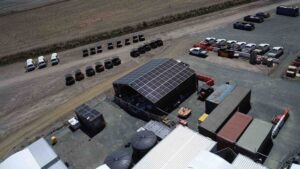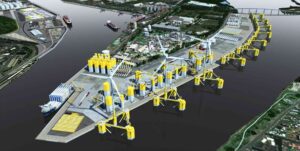Chile has successfully navigated a total solar eclipse, which almost entirely curtailed the country’s fleet of solar farms briefly on Tuesday after careful planning ensured electricity supplies would not be interrupted.
Chile has some of the world’s best solar resources and has made major investments in boosting the country’s renewable energy capacity as it embraces the need to take action to eliminate the use of fossil fuels.
Chile currently has around 1,500MW of solar capacity in its electricity system and has set some astonishing records for low-cost solar energy as it prepares to transition its energy system entirely away from coal.
Chile recently pledged to completely phase out the use of coal for electricity generation, including the imminent closure of eight of the country’s largest coal generators, cutting the market share of coal generation in half by 2024.
But these plans were put to the test when Chile and Argentina were briefly plunged into darkness late on Tuesday afternoon as both countries experienced a total solar eclipse.
Chile’s energy minister, Juan Carlos Jobet, was furiously tweeting updates during the solar eclipse, tracking the output of the country’s solar power plants, and has made efforts leading up to the eclipse to allay fears of potential interruptions to the country’s power supplies.
Chile’s electricity system operator had planned for as much as 1,500MW of solar generation to be interrupted, with additional generation from the country’s hydroelectric plants and gas generators readied for the event.
Monitoring the output from Chile’s solar farms, Jobet shared data on Twitter showing how solar generation fell from the day’s high of around 1,450MW of solar generation to just a low of 200MW at the peak of the eclipse, with some solar farms only partially impacted.
Después de un máximo de generación solar de 1.450 MW, a esta hora está bajo 200 MW. https://t.co/A2rGgPBSYk pic.twitter.com/zlMU05mdKm
— Juan Carlos Jobet (@JCJobet) July 2, 2019
The impacts of the solar eclipse were observed through reduced solar generation from around 3.15pm in Chile, reducing the overall production of solar generation by around 1,250MW in the space of an hour.
The eclipse had been completed by 4.40pm local time, with solar output slightly increasing again as sunset approached.
As an eclipse is an event that can be predicted years beforehand, and with a high level of precision, the Chilean government, and the system operator were able to prepare and rehearse plans to use the country’s other generation systems to maintain supply.
For the two-hour period where solar generation was impacted by the eclipse, the country successfully tapped into its hydroelectricity reserves and gas generators to maintain supply.
“We have planned to make strategic use of our hydroelectric and gas generation, in order to maintain sufficient reserves and availability of flexible generation,” chairman of Chile’s National Electricity Coordinator Juan Carlos Olmedo said.
The industry group that represents power generation companies in Chile, Generadoras de Chile (Generators of Chile), saw the positive opportunity the eclipse provided, as a test of the energy system’s ability to ride through an interruption without disrupting power to homes and businesses.
“The solar eclipse is a real experiment to test the flexibility and capacity of the electrical system,” President of Generadoras de Chile Claudio Seebach said.
Chile will experience a second solar eclipse next year, with the next due during the summer on 14 December 2020, with a total eclipse covering southern Chile and Argentina.
California managed its own solar eclipse in 2017 without major issue, as it likewise had ample time to arrange contingency measures for the event that saw the State’s 10,000MW of utility-scale solar generation briefly interrupted and had likewise prepared backup generation from pump-hydro and gas generators.
Australia will experience its own total solar eclipse in 2028, passing across most of the country, and through the centre of Sydney.
Let’s hope Australia is as well prepared.










